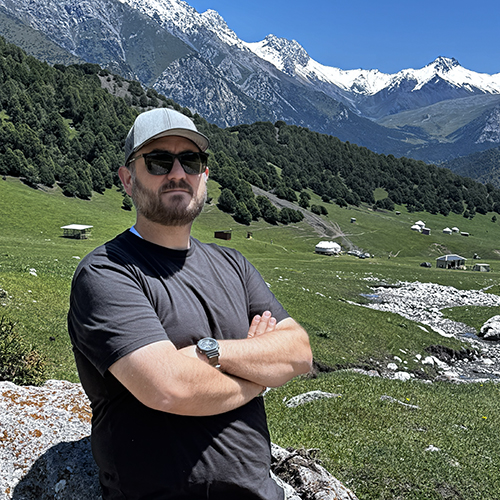When high school students poured onto the UW campus in March for Math Day, they expected to hear about graph theory and probability. But math-based card tricks? The physics behind a boomerang’s path? The math involved in weather forecasting?
Math, as it turns out, is everywhere. That’s the main lesson of Math Day, which has been presented by the Department of Mathematics for the past 20 years. “Our focus is not technical mathematics,” says James Morrow, professor of mathematics and Math Day coordinator. “We just want to show high school students how interesting math is, and how crucial it is in a lot of fields, from astronomy to oceanography to forecasting.”

Math Day was first introduced by a professor who recalled attending a similar event as a teen in Australia. Morrow took on the role of coordinator about 18 years ago. With space for 1,200 students, the event fills weeks in advance. The Boeing Company and Wells Fargo Bank provide scholarships for nearly 300 students and more than 30 teachers to ensure broad participation. Morrow says he is not aware of any other U.S. college or university that offers a non-competitive math outreach event on such a grand scale.
In addition to math-related lectures and hands-on activities , Math Day includes panel discussions on math careers and college life, and behind-the-scenes tours of the Kirsten Wind Tunnel, the Seismology Lab, the Luminescence Dating Lab, and other campus facilities that demonstrate mathematics in action. “We aim the lectures to a tenth- or eleventh-grade level,” says Morrow. “We assume students know some algebra or geometry, but not a whole lot else. They don’t have to be the best math students in their school—just interested in the subject.”
With more than two dozen events offered, and many of them repeated several times, Morrow needs an army of volunteers to help out. This year he recruited 77 volunteers, most of them UW undergraduates. “They are absolutely crucial,” he says. “Some came to Math Day as high school students and thought it was great fun. Some didn’t get to come and always wanted to.” The faculty and graduate students who lead sessions also volunteer their time. The high level of volunteerism is all the more impressive given that the event is held during the University’s spring break.

John Wilson, a math teacher at Timberline High School in Lacey (and a 1976 alumnus of the UW Department of Mathematics), has brought students to the event nearly every year since 1993. This year he brought 16 students, sharing a bus with two other schools in the same district. “I am so grateful to the folks that put all that energy into such an action-packed day,” he says, adding that his students spend the return bus trip chatting enthusiastically about the sessions they attended.
Jocelyn Co, a math teacher at Cleveland High School in Seattle, brought 35 students—and still remembers attending Math Day as a student herself in high school. “I like the way it introduces the students to the different math fields out there, instead of just the regular course of study they have at school,” she says. “And I like the way it provides our students with exposure to the college campus. They maybe realize that it’s not as far from their life as they think.”

While Math Day has never been intended as a recruitment tool, both Co and Wilson consider the opportunity for students to visit a college campus a huge plus. Beyond math, students see that college is a place of ideas and possibilities. “I enjoy giving them a day to explore and learn about what can go on at a university, and see into what could be their future,” says Wilson. “I think it helps them become more motivated about doing well in school. They see that there are good things to look forward to.”
After coordinating Math Day for nearly two decades, is Morrow losing steam? Hardly. “My wish would be that we could offer something similar to the general public,” says Morrow enthusiastically. “We make math fun. I think this would appeal to any audience, anywhere.”
More Stories

A Sports Obsession Inspires a Career
Thuc Nhi Nguyen got her start the UW Daily. Now she's a sports reporter for Los Angeles Times, writing about the Lakers and the Olympics.

Through Soil Science, an Adventure in Kyrgyzstan
Chemistry PhD alum Jonathan Cox spent most of 2025 in Kyrgyzstan, helping farmers improve their soil—and their crops—through soil testing.

A Healing Heart Returns
In February, the UW Symphony will perform a symphony that Coast Salish elder Vi Hilbert commissioned years ago to heal the world after the heartbreak of 9/11. The symphony was first performed by the Seattle Symphony in 2006.